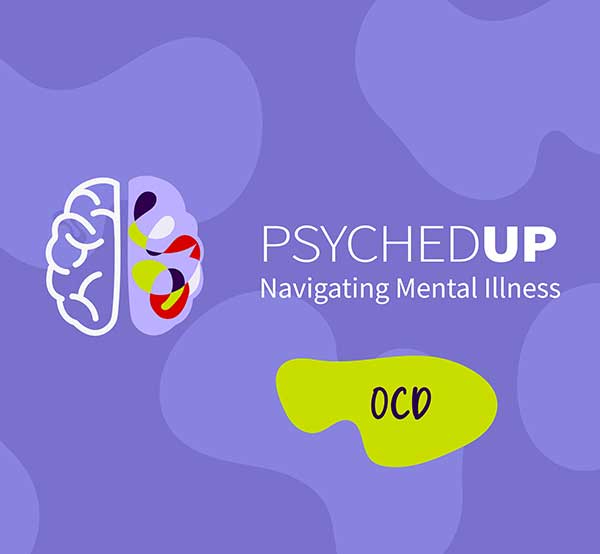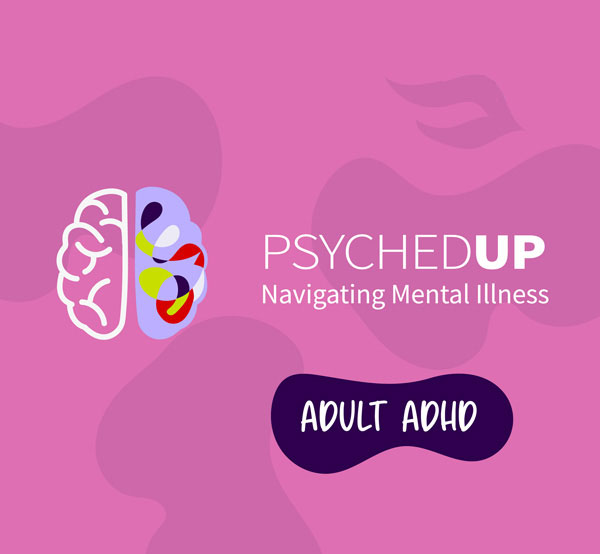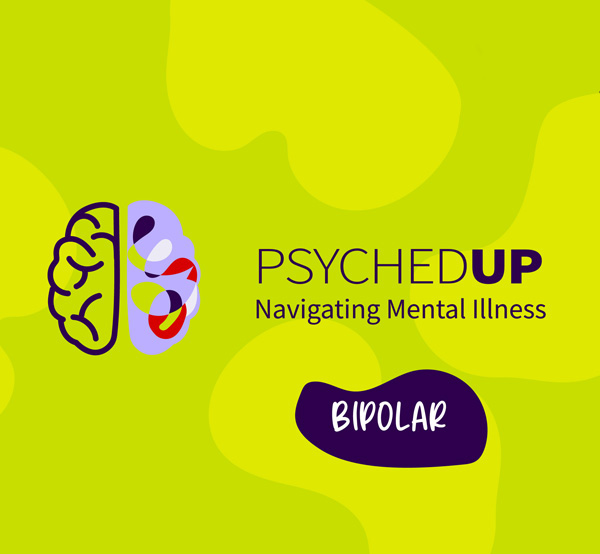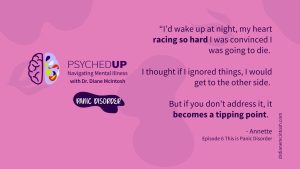Thinking of suicide or worried about someone you know? Call or text 9-8-8, toll-free, anytime, for support.
This is Panic Disorder: Episode 6
Anxiety is something many of us experience. But how do we distinguish between normal anxiety and pathological anxiety?
In this episode Dr. Diane McIntosh gets into the science behind panic disorder, explains symptoms and talks about why it’s so important to reach out for help. We also hear from Annette, who did everything she could to pretend she was ok, until there was no hiding that she wasn’t. She shares her firsthand perspective of what it’s like to have panic disorder. Then, Dr. McIntosh, along with her friend and colleague Dr. Randy Mackoff, explores the latest in treatments from talk therapy to medication.

Dr. Randy Mackoff, PhD
Dr. Randy Mackoff is a registered psychologist in British Columbia. He has a private clinical practice where he provides psychological treatment for a wide range of issues, including but not limited to depression, anxiety, PTSD, coping with psychosis, and marital therapy. He is a retired Professor in the Criminology Department at Douglas College and a past Chairperson of the Criminology Department. He is a Clinical Associate in the Clinical Psychology Department at Simon Fraser University, providing clinical supervision to graduate students. He currently consults with law enforcement agencies in Crisis Negotiations, Undercover Operations, Witness Protection, Psychological Support for witnesses, Source Suitability, Major Crimes, Recruiting, and Human Resources. He is a designated Vancouver Police Department Psychologist and represents them at the Major Cities Chiefs Association Psychology meetings. He is the Co-Chair of the Psychology Committee for the Canadian Association of Chiefs of Police (CACP).
Enjoying PSYCHEDUP?
Rate and review the podcast to help us reach more listeners.
Episode Highlights

3:12
Annette talks her experience with panic disorder

9:56
Dr. Mackoff and Dr. McIntosh discuss the different treatments for panic disorder

24:54
Dr. McIntosh chats about the stigma associated with mental illness
Key quotes from This is Panic Disorder
"And I just thought that if I ignored things, and if I just got up every day and powered through, I would get to the other side, and this would all go away. And eventually what happens is, if you don't address it, it is not going away, and it just becomes a tipping point, and that's what happened to me.”
7:40
“When you’re not breathing in a slow pattern where you’re actually getting oxygen, what’s happening is the ratio of carbon dioxide to oxygen in your body is actually triggering your panic…you’re getting short of oxygen, you’re getting high in the carbon dioxide, and this creates difficulties. – 14:50
“There was a huge part of me that did not ask for help until I had to, because I did not want anyone to see me as anything but strong, which of course, I came to realize you are strong if you ask for help, you are strong if you let people in.” – 23:59
More About Panic Disorder

Panic attacks are sudden, intense, and often terrifying experiences, commonly accompanied by the overwhelming belief that one is going to die or is having a heart attack. This fear is understandable, as panic attacks trigger physical symptoms, such as a racing heart, chest pain, or shortness of breath, that can mimic serious health conditions. While the peak of a panic attack typically lasts only minutes, its emotional impact can linger much longer.
Panic disorder occurs when these attacks happen repeatedly and unexpectedly, leading to a persistent fear of future episodes. This can cause individuals to avoid certain places or activities, further reinforcing anxiety.
Panic attacks involve a range of physical, cognitive, and behavioral symptoms that can be overwhelming and distressing.
Physical symptoms:
| Cognitive symptoms:
Individuals may feel as though they are experiencing a life-threatening emergency, leading to distressing thoughts such as:
|
Behavioural signs: Avoidance – Some individuals may avoid places where past anxiety symptoms occurred, such as a specific grocery store and may also steer clear of travel, crowded spaces, or strenuous activities like exercise. | Impact of avoidance: Avoidance creates an illusion of safety, reinforcing fear and leading individuals to avoid more situations, believing it prevents panic attacks. Over time, this behavior can severely limit daily life, making social interactions, work, and leaving home increasingly difficult. |
Treatment for panic disorder typically involves a combination of psychological techniques and medication.
- One effective method is learning to slow down breathing and focus on calming the body, such as relaxing the shoulders, hands, and face, to reduce physical tension.
- Cognitive-behavioral therapy (CBT) helps individuals identify and challenge thoughts that amplify panic, such as believing they’re in danger when they are actually safe.
- Exposure therapy is also used to gradually help individuals face anxiety-provoking situations, enabling them to apply calming techniques when anxiety rises.
- In some cases, medication, such as antidepressants, may be prescribed to manage symptoms, and for more severe cases, additional medications like antipsychotics may be considered.
Related Posts on Panic Disorder

Psychiatric Guidance for Optimal Patient Care
Founded by Dr. Diane McIntosh, RAPIDS Health provides timely, effective clinical decision support for mental health diagnosis and treatment. Whether you’re a clinician or someone seeking help, we offer evidence-based, personalized treatment guidance tailored to each individual’s needs.











